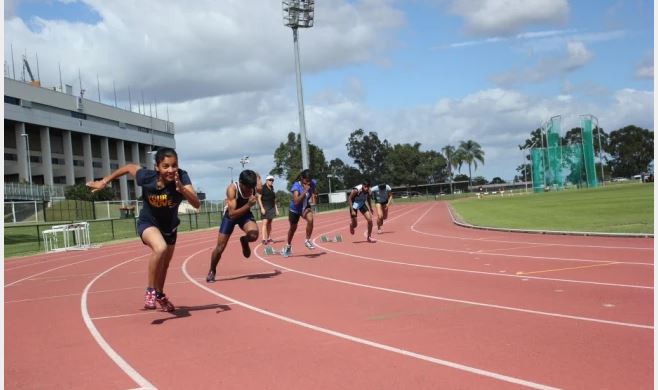Understanding Feminism:
- We all know that feminism is the most disputable subject of all time. In my previous article I vividly wrote of how pseudo-feminism has become the prime obstacle for all those feminists who tussle for their equality. Pseudo-feminism fails to scrutinize that feminism, is all about achieving equality in a world. It means both men and women have equal rights. However, where did this word ‘’feminism’’ come from? And how did people gain the success of equality from it?
The First Wave:
The first wave linked with the abolitionist movement in the USA at the time. Essentially, both the movements focused on social reformation and liberation from oppression.
Further, the wave formally began the Seneca Falls Convention within the year 1848 when around 300 men and women rallied to the explanation for equality of women. Elizabeth Cady Stanton drafted that the Seneca Falls Declaration outlining the new movement’s ideology and its political strategies. This wave of feminism came out of an environment of urban industrialism and liberal and socialist politics. The goal was to open doors for women, with a focus on suffrage.
The Second Wave:
The second wave hit in the 1960s and continued in the 90s. It took place throughout the western world and aimed to increase equality for women. The first wave focused on suffrage. While, the second wave drew attention to the issues of domestic violence and marital rape.
This movement began with protests against the Miss America pageant in Atlantic City [1968 and 1969]. Feminists parodied what they held to be a degrading “cattle parade” that reduced women to things of beauty dominated by a patriarchy. Which sought to stay them within the home or low-paying jobs. The second wave of feminism became the voice for many other social movements. It became exemplary of black power or efforts to end the war in Vietnam.
Women Only groups:
Feminists form women-only organizations and “consciousness-raising” groups like “The BITCH Manifesto” and “Sisterhood is Powerful. These show that how they fought for their places. Moreover, one of the most strains of this complicated and diverse “wave” was the development of women-only spaces and the notion that women working together create a different dynamic that is not possible in mixed-groups, which could ultimately work for the betterment of the entire planet.
With the second wave of feminism women gained more rights and power going into the 1990s. They were able to percept about other aspects of their identity, welcoming each and every individuality and rebellion. This was an era of reclaiming. Significantly, important cultural touchstones like Eve Ensler’s play The Vagina Monologues, a search of women’s feelings about sexuality which includes vagina-centered topics as diverse as orgasm, birth, and rape. Also, the righteous anger of punk rock’s riot grrrls movement and the playfulness, seriousness, and subversion of the Guerrilla Girls, women artists who donned gorilla masks in an effort to expose female stereotypes and fight discrimination against female artists.
The Third Wave:
The Third Wave kept a floated by the confidence of having more opportunities and less sexism. Kimberle Crenshaw, a gender and critical-race scholar, came with the idea of “intersectionality” in 1989. It refers to how different kinds of oppression, like those based on gender and race, intersect with each other. First and second-wave feminism had largely neglected racial disparities within gender. Thanks to which the Third wave paid more attention towards it. The phrase “third-wave feminism” was coined in 1992 by Rebecca Walker daughter of a novelist, a 23-year-old Black bisexual woman. With the internet taking its reach among people, it was easier to hear perspectives and ideas from feminists around the world. Feminism was expanding.
The Fourth Wave:
Further, some people think we’re still within the third wave of feminism. Reason being, the fourth wave isn’t such a lot of a shift because of the continued growth of the movement. The fourth wave of feminism initiated in 2012 and characterized by a focus on the empowerment of women by the use of the internet, tools and intersectionality. The Fourth-wave of feminism argues for equality for girls and women. It also includes boys and men to overcome gender norms. For instance by expressing emotions and feelings freely, expressing themselves physically as they want, and to be engaged parents to their children.
The utilization of print, news, social media platforms and tv to collaborate, mobilize, speak against abusers of power in seeking the empowerment of women and providing justice against the harassment is prominent. The most renowned movement of this wave was the “Me Too” movement. It is a social movement against sexual abuse and sexual harassment where people publicize allegations of sex crimes. This phrase was initially used in this context on social media in the year 2006, by sexual assault survivor and activist Tarana Burke.
Conclusion:
Traditionally feminine traits are considered bad or unwanted, this is why it is believed that why women and men have taken to more masculine traits. This dimension Keeps an eye on how extent to which a society stress achievement. Masculinity is seen as the trait to emphasizes passion, acquisition of wealth, and differentiated gender roles.
Femininity is seen to be the trait that includes nurturing behaviors, sexuality equality, environmental awareness, and more fluid gender roles. Therefore, all those women who fought for their justice have almost liberated their rights. The fundamental purpose of it is to empower people to understand the experiences of those who are different from them. To underline the broad aim of gender equality. Conclusively, when it comes to gender equality it concerns both women and men and has a strong impact on their daily lives.
Also, Read| Ixigo intends to raise INR 1,600 Cr via IPO


















